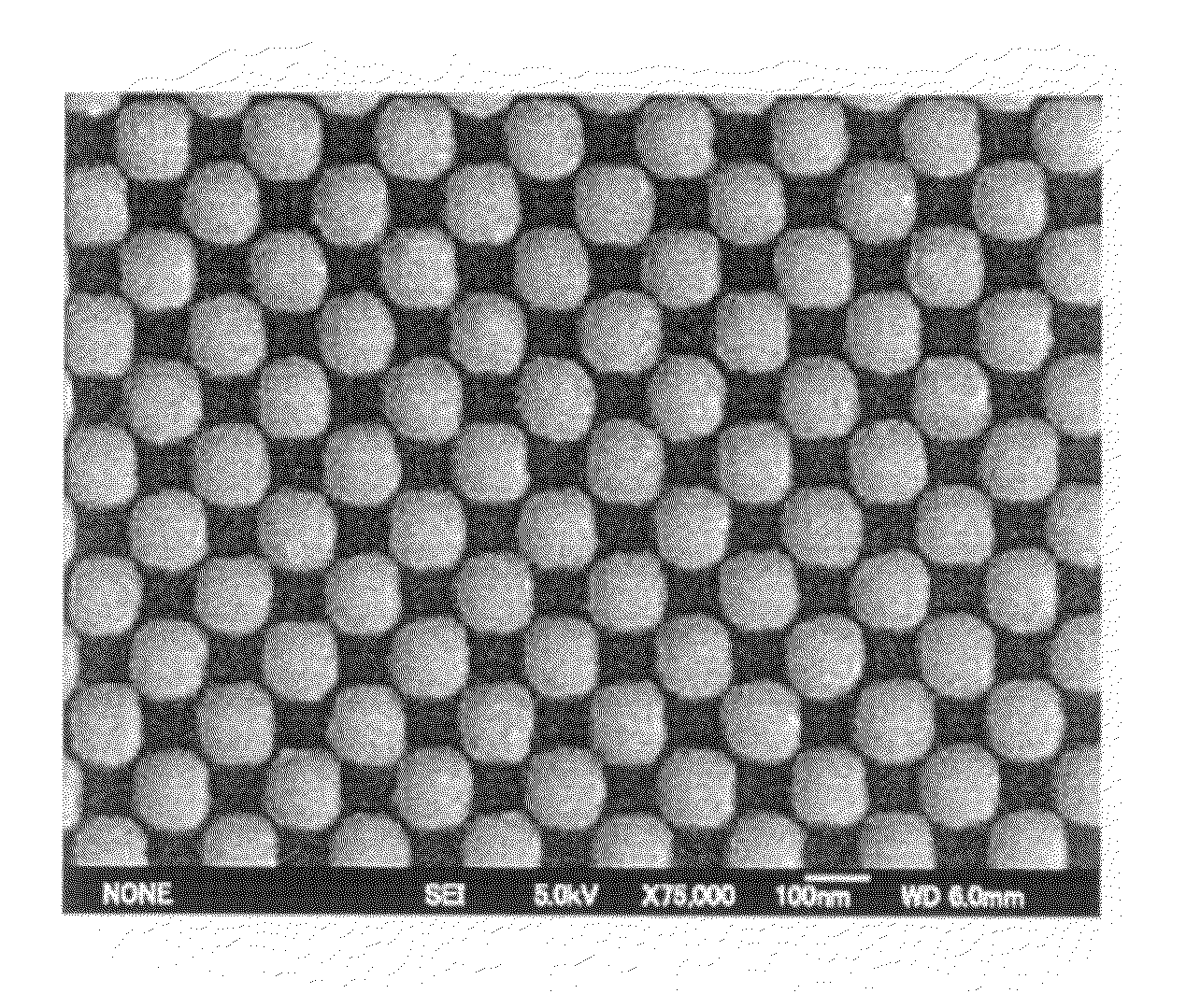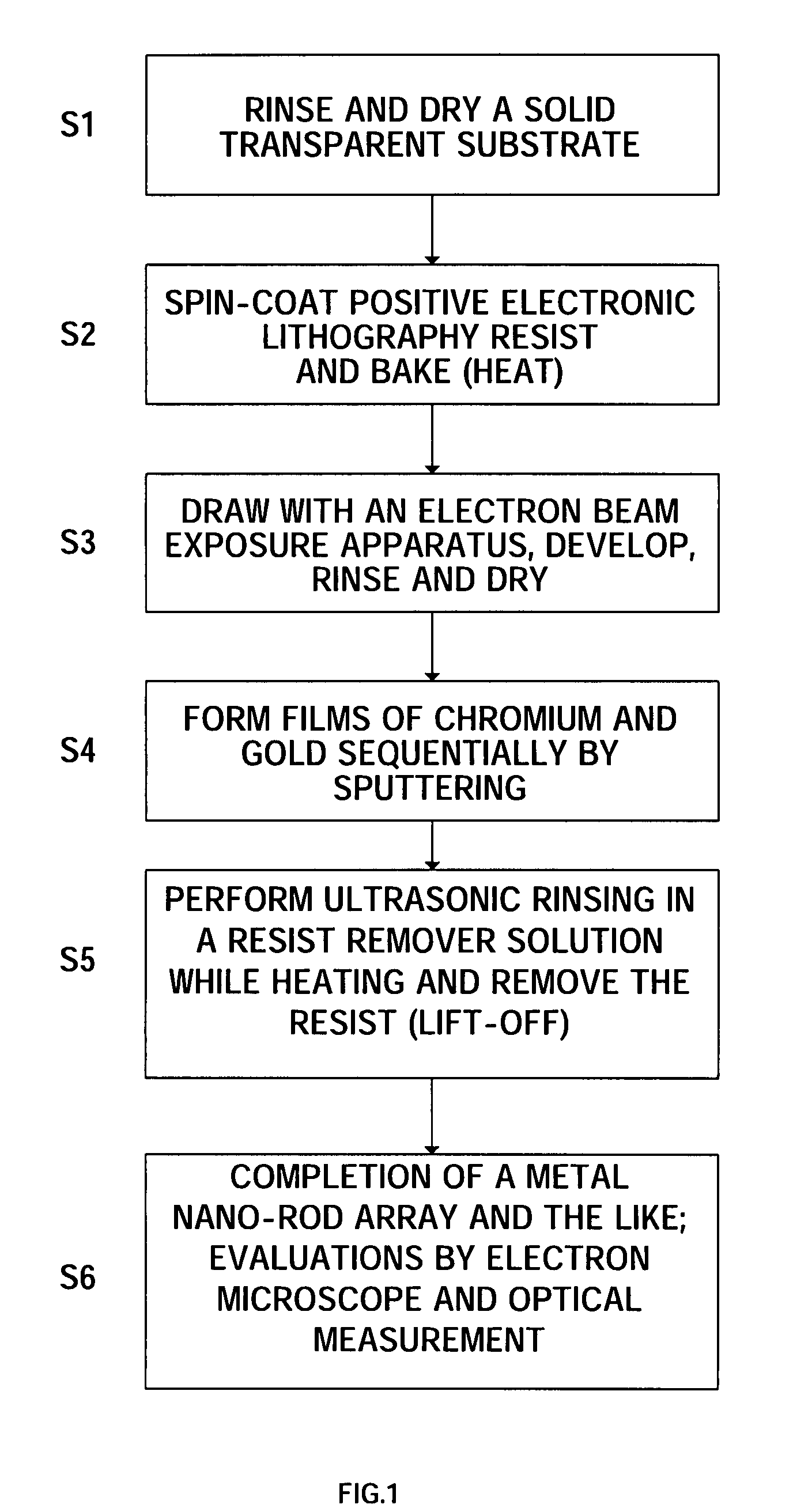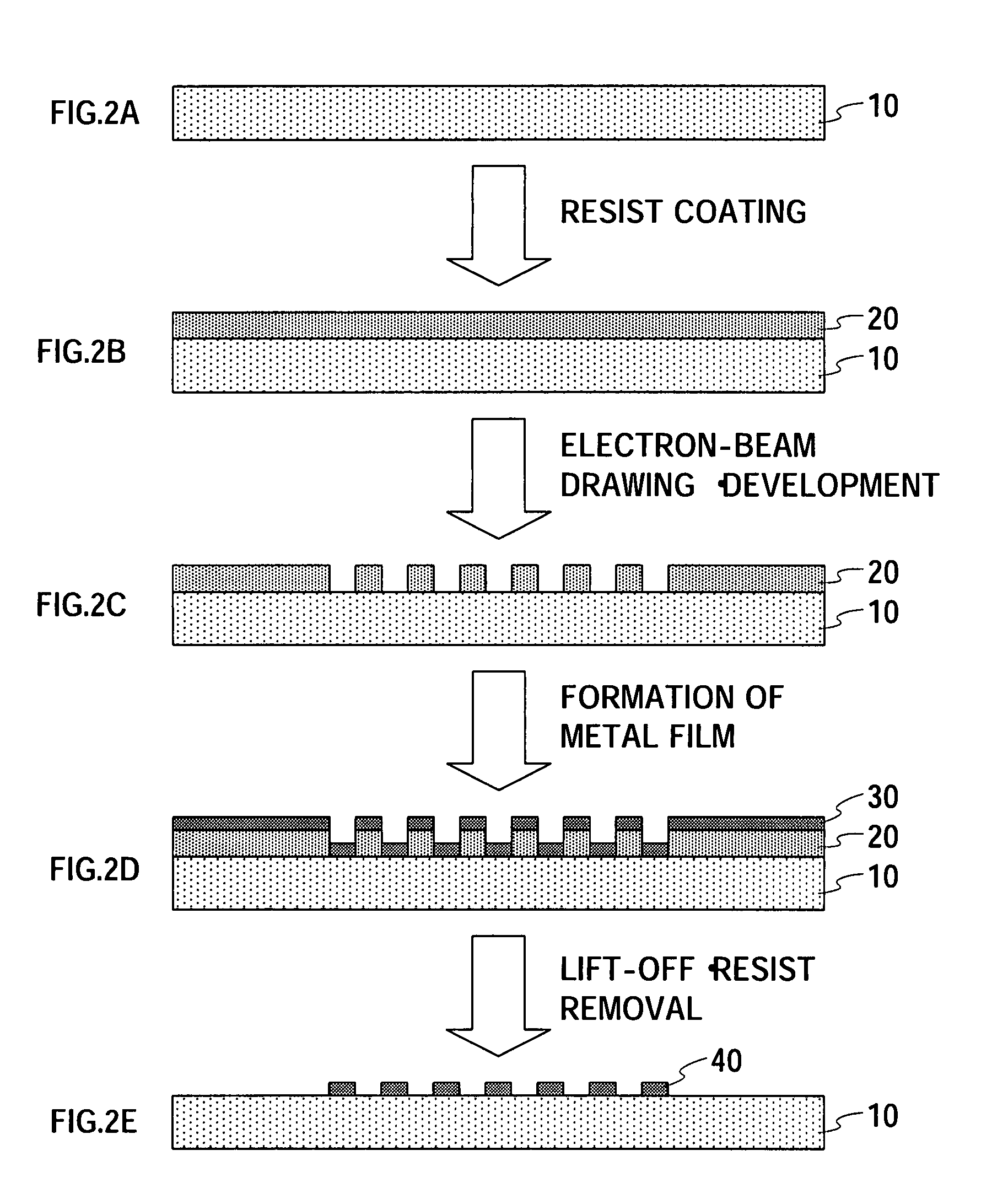Sensing device, sensing apparatus, and sensing method
a sensing device and sensing technology, applied in the field of sensing devices, sensing apparatuses and sensing methods, can solve the problems of difficult to achieve multiphoton excitation efficiency, difficult to actually improve the excitation rate of multiphoton excitation, and the approach to implement multiphoton excitation and plasmon enhancing effects with high efficiency is limited in its effect to a certain level, so as to enhance optical responses, enhance optical responses, and enhance optical responses
- Summary
- Abstract
- Description
- Claims
- Application Information
AI Technical Summary
Benefits of technology
Problems solved by technology
Method used
Image
Examples
example 1
[0137]In this example, fine metal particles were fabricated on a glass substrate (Matsunami Glass: 24 mm×24 mm) by electron-beam lithography / lift-off. More specifically, the glass substrate was subjected to ultrasonic rinsing with acetone, methanol, and pure water in this order, and a positive electron-beam lithography resist (ZEP-520A, Zeon corporation, diluted to two parts of a dedicated thinner) was spin-coated (initial: 1000 rpm for 10 sec. main: 4000 rpm for 90 sec.) on the glass substrate, and was pre-baked at 180° C. for 3 minutes on a hot plate. Next, a predetermined pattern was drawn at a dose rate of 1.2 μC / cm2 using an electron beam exposure apparatus with the acceleration voltage of 100 kV, and developed for 30 minutes. Next, 2 nm of chromium and 10 nm to 100 nm of gold were deposited on the developed and rinsed substrate by sputtering, and lift-off was performed in a resist remover solution (dimethylformamide). At this point, by applying ultrasonic waves for 5 minutes w...
example 2
[0146]The present inventors further performed experiments on multiphoton excitation efficiency and fluorescence enhancement of the metal structures (sensing devices) fabricated by the method.
[0147]The present inventors have fabricated a metal structure such that the thickness, the length of the long axis and the length of the short axis of each fine metal particle was constant and that the distance between adjoining fine metal particles was only varied, and examined multiphoton excitation efficiency and fluorescence enhancement of these metal structures.
[0148]FIG. 11 is an electron microscope photograph of a metal structure where fine metal particles with various gaps are formed integrally. Figures (0 nm, 2 nm, 4 nm, 6 nm, 8 nm, 10 nm, 20 nm, 30 nm and 40 nm) shown in FIG. 11 are distances between respective adjoining fine metal particles. The long axis and short axis of each of the fine metal particles were 100 nm, and the thickness thereof was 40 nm.
[0149]After making dye (1,4-Bis...
example 3
[0160]In this Example, fine metal particles were fabricated on a glass substrate with the design of the long axis and short axis of both 80 nm and the distance between fine metal particles of 4 nm. First, DNA (1 mmol / l) with thiol modified at 3′ end of 40 base pairs was dropped onto the glass substrate, and the glass substrate was allowed to stand in an incubator of 37° C. for 12 hours to induce coupling to gold. Next, complementary DNA was allowed to stand in a buffer of pH7.4 at 37° C. to induce hybridization. Then, the metal structure was slowly stirred three times each for 5 minutes in a surfactant solution (sodium dodecyl sulphate, SDS solution) and rinsed, SYBR Green (Molecular Probes, Inc.) was diluted to 1000 parts of dimethyl sulfoxide (DMSO) and dropped onto the metal structure, and the metal structure was rinsed by the surfactant solution in the same way as described above ten minutes later. The measurement system was the same as described above.
[0161]Then, the fabricated...
PUM
| Property | Measurement | Unit |
|---|---|---|
| distance | aaaaa | aaaaa |
| height | aaaaa | aaaaa |
| height | aaaaa | aaaaa |
Abstract
Description
Claims
Application Information
 Login to View More
Login to View More - R&D
- Intellectual Property
- Life Sciences
- Materials
- Tech Scout
- Unparalleled Data Quality
- Higher Quality Content
- 60% Fewer Hallucinations
Browse by: Latest US Patents, China's latest patents, Technical Efficacy Thesaurus, Application Domain, Technology Topic, Popular Technical Reports.
© 2025 PatSnap. All rights reserved.Legal|Privacy policy|Modern Slavery Act Transparency Statement|Sitemap|About US| Contact US: help@patsnap.com



